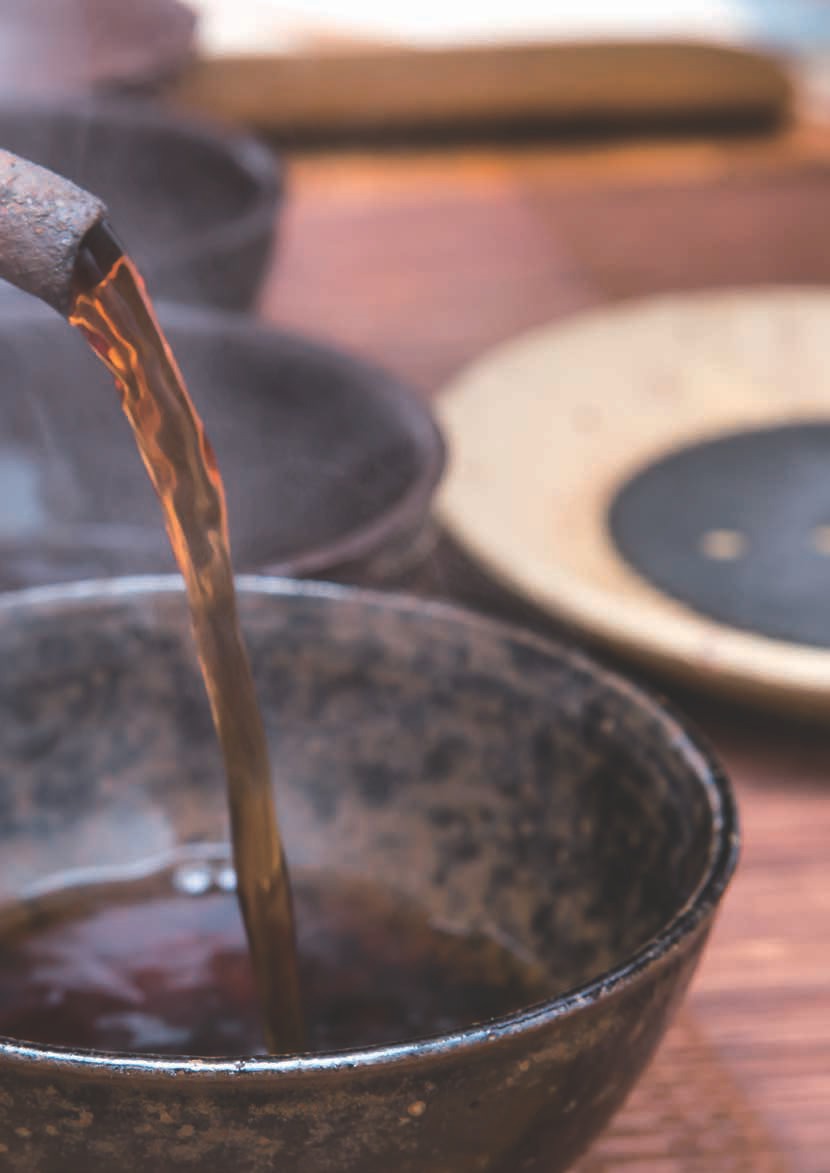
 |
|

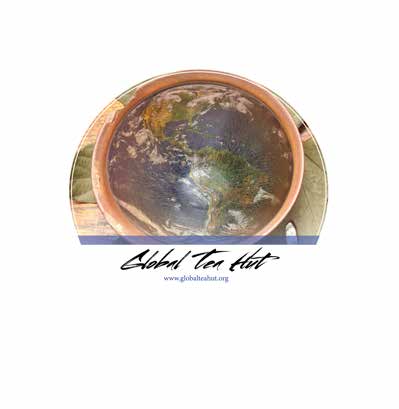

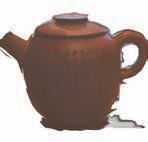
Many of you have come to one of the events we host around the world and tried some of the amazing Five Element tea that Wu De often blends. These tea blends are deep, relaxing and often result in some of the most transcendent sessions we've ever had. There are probably a lot of lasting, lifelong Five Element memories being evoked here in this Hut now as we read these words. We are very excited to share the first ever Five Element tea in Global Tea Hut. We hope that this tea rekindles some nostalgia for the great memories we've shared together around the world. And for those of you who have yet to drink one of these teas, introducing new tea to you might just be our greatest joy! You'll soon understand why this is indeed a very special month of Global Tea Hut.
A Five Element tea like this month's is a blend of five different dark puerhs, like aged sheng, shou or aged shou, and sometimes black teas, which are mixed together based on their energetic frequency, flavor and mouthfeel to create a balanced liquor that will center you in your heart. When blended well, a Five Element tea will cause palpable movement towards your heart-center from your extremities. You should feel the Qi flowing towards the center of your being. This is a very comforting, warm and balanced feeling. People often feel more grounded after such a session, with a clarity and lasting smile that changes one's perspective on the world and a life lived in it.
In the beginning, Wu De developed Five Element tea blending as a way to extend the lifespan of very rare aged sheng teas. It is great to drink these teas on their own, but then their very powerful medicine has a much narrower reach - fewer people will ever try them. While we do brew such magic old teas unblended at the center, we also like the option of making a Five Element tea. And we can do that more often, sharing great, transcendent sessions with all our guests and not just drinking such rare teas on special occasions. Though this was the impetus for starting, as we began blending and sharing Five Element teas and grew more skilled at blending them, we've found that they are beneficial for many other reasons besides just conserving aged teas. As we mentioned, they balance the energy of the body and evoke a harmony with Nature, which is also moving in and through the Five Elements.
Since ancient times Chinese sages have separated the material world into five elements called "Wushing (五行):" wood, earth, water, fire and metal. These principal elements influence all aspects of Chinese culture, philosophy and spirituality - from Daoism to Buddhism, Fengshui, Traditional Chinese Medicine and even tea. Lu Yu himself inscribed symbols representing the Wushing on all of his teaware and spoke of the way they all combined fluently in the brewing of tea. There is a very real way in which tea is an alchemy, combining these five elements into the sacred libation that heals the soul. Harmony through alchemy has always been central to the aesthetics and philosophy of tea culture, whether clearly expressed by ancient Daoist mendicants, or left unstated, yet recognized by the modern tea drinker who intuitively knows when a tea set functions well, when a tea is brewed properly, or when something in the process is off. And that alchemy is also our cultivation. As we refine our tea brewing, sensitivity, skill and discipline, we also change ourselves, turning our own lead into gold.
Master Lin often says that the highest skill in tea (gongfu) is when your sensitivity reaches the point that you can discern each and every leaf, "for Heaven creates no two leaves alike!" This is a lofty goal indeed, and reminds us that we can always improve and continue honing our skills, even unto our last day on this beautiful planet! If you re-read what he says, though, you'll also find other deep truths.
The issue of single-region versus blended tea in puerh is still an ongoing debate, and most often you will find tea lovers favoring single-region. From a certain perspective, this may be justified, but not always. Any given blend may be better than any one single-region cake. Also, Master Lin's aphorism speaks to a greater truth, which is that all tea is actually blended. Living tea is seed-propagated, and that means every tree will be unique. Like people, tea trees share genetic similarities, as well as some likeness because they grew up in the same terroir, but ultimately every tea tree will be distinct. This means that tea mixed from even a few living tea trees is a blend of different teas. In the concrete, however, even tea from a single tree is actually a blend. The east and west side of a single living tea tree will receive a very different amount, kind and hue of sunlight and therefore be different in every way. (We say "living" tea here as opposed to plantation bushes, which are often so crammed together that such influence is subtler. They are also cloned, not seed-propagated.)
In order to blend a Five Element tea, you have to know your teas very well. The fact is that most teas can play any of the five roles, depending on which other teas they are blended with. Amongst his circle of friends, Gary is the fire - he's the wildest of the bunch. They all say so. But then, one weekend, Gary hangs out with a new circle, only to find that in this group he is the tamest of all - the earth, grounding everyone. Most often, the role a tea plays will be relative to the other four, and you will have to know the teas well to choose.
This is a bit like casting actors for a movie. Good actors can play any role - if they're good enough, gender doesn't even matter, like Cate Blanchett's amazing portrayal of Bob Dylan in I'm Not There. Other actors need to be typecast; they are more suited to play one or two roles. Still others only seem to be able to play the same character in every film they make, but they are rare. Similarly, most teas can play any of the five roles, and you will have to decide which will be more suited to be water, for example, in any particular configuration. Other teas, like Ember, as you can guess from its name, are much more suited to be fire in every configuration. All of this requires knowing your actors (your teas) very, very well before you try blending them.
After you decide on your five teas, the skill of blending Five Element tea deepens with amount and order. The amount of each tea will be extremely important, as this is what will truly balance the Five Elements with each other. Certain teas can quickly overpower others, and need to be added in just the right amount. There is no real formula for doing this, but one bit of advice is to add the tea in small increments, as it is easy to add more and difficult to take tea away. You will have to be sensitive to the tea. The more advanced method is to put your hands over the bowl you are blending in, close your eyes and try to feel the tea, asking if it is balanced. This obviously requires some spiritual affinity for the teas inside. The slower method is to blend and then try the tea, adapting the blend the next time you try. And before you get disappointed, Wu De says that he uses both these methods: "Even after years of blending Five Element teas, I still have to combine a sensitivity to the teas with a trial and error approach, especially when combining teas I haven't ever blended before. For that reason, I always take teas I am extremely familiar with, and have blended many times, when I am blending for public gatherings. Otherwise, getting the blend just right takes a few tries. When you hit the bull'seye, you will know it. The tea will shine, and everyone will be glowing - centered and grounded the way people look at the end of a meditation retreat."
As with amount, there is no all-encompassing recipe for the order in which the teas are added. This will depend on the kinds and amounts of tea one is using. However, a good system to start with is: water, wood, fire, earth and metal. This is the easiest and most natural system, since this is how the elements transform in Nature. Water is absorbed by trees, for example, which are burned to ash, becoming earth, where metal is forged and then eroded into water...
We know that many of you are probably very interested in trying your hand at Five Element blending, so we thought we would give a very basic starting point, discussing each element one by one. Of course, we want to emphasize that if you lean too heavily on this formula, you will prevent yourself from developing the sensitivity you need to blend nice Five Element brews that transform guests. We suggest starting with blends just for you and close friends, and then critically discussing them afterwards. This starting guide is just that, and this point cannot be overemphasized.

Water: Start with water. In a Five Element tea, water is the binding force. It holds the structure together. It is most often the foundation of the blend, though it is worth repeating again and again that this isn't always the case - you may want a fiery or earthy blend, for example. The water tea will most often represent the largest portion of the blend, maybe even by more than half, like this month's. You want a nice, solid tea in this place - one that can take in the energy of the other four and hold them within it. You want a solid tea that is Yin and will yield to the other four.
Wood: Obviously, any tea can play the role of wood, since tea is a plant. This is the easiest of the five to choose. However, this can mean that beginners don't think enough about this tea, especially the amount. You don't want this tea to take too much from the water. Wood teas are also the easiest to choose since you don't need to rely so much on energetic, spiritual means. It is easy to taste when a tea is woody. And when you are learning to blend Five Element tea, using strong examples of each tea will make the process easier, as your refinement will then be about order and amount.
Fire: You must be very careful with fire. It can easily upset the balance of a blend. We often use very little of the fire tea. This tea should be warming. Think of the tea you naturally go to when the weather is cool. Most of us will have a particular shou or black tea we turn to when it is cold. Try drinking some of your shou teas, aged sheng or black teas and feeling if any are warming in the stomach/chest. This tea must also be an energetic activator. It must catalyze the other four, making them move. Heat is the conveyer of tea. Without heat, the essence wouldn't be extracted from the leaves or move through our bodies. In the same way, the fire tea makes the blend move. Therefore, this should be the most Yang of your teas, with the ability to stimulate and motivate energy.
Earth: The earth element in a blend is the grounding force. It holds the whole structure down. If you find that the session is flighty, and your guests describe the experience in terms of visions, feelings of being distant or far away, trippy experiences, etc., then you didn't have a strong enough, or large enough, quantity of your earth element. Sometimes you can tell this has happened because your guests aren't drinking their tea; they forget to even pick up the bowl! (This could also be too much metal.) Of course, a great tea session is a little transcendent, but you don't want to ever lose the tether with the ground, the present moment. This should be the kind of tea that you drink when you want to read or study - the kind that perks you up and keeps you focused.
Metal: In Five Element tea, metal is the spirit of the blend. Metal is the power and Qi - the spiritual force of the blend. This should be your oldest, strongest tea. This tea comes last, and should be added sparingly. It is the spark that makes the Five Element engine take off. (The fire is the fuel.) This tea is the spike in the punch, the kick, the dose of medicine mixed with the sweetness that helps wash it all down. This will be the energetic power of the whole blend.
There are two main reasons why we have been reluctant to send out a Five Element tea up until now. The first is that, as you can see by reading through this very cursory introduction, this topic is advanced, deep and very complicated. This isn't to say that our community isn't skilled enough to explore Five Element brewing or that it is "too advanced" - whatever that means - but rather that we wanted to explore some other topics first. None of the teachings in our tradition are secret or esoteric. You don't have to pass through hurdles to learn. We will gladly share all that we know with anyone. That doesn't mean that there isn't a proper order to learning them. While you can pick up the fourth Dune book and open to chapter seven - it isn't a secret only for the initiated - it is much more rewarding to get to book four, chapter seven by reading from the beginning to there.
The second reason we haven't yet sent a Five Element tea is related to the difficulties of blending one that can survive the journey. Blending this month's tea required overcoming a great challenge, which is also the main reason why we haven't shared a Five Element tea in Global Tea Hut before. The reason that Five Element teas work in the first place also renders them un-storable, un-ageable and really un-sendable in Global Tea Hut. Five Element tea functions because tea is so absorbent, physically and energetically.
Tea is an amazing plant, with one of the most adaptable energetic structures in the natural world, which is why it is so responsive to different processing methods, creating the incredibly vast array of teas we love. The tea world is, in fact, so huge that a single lifetime isn't enough to explore it. Even after decades of drinking tea, the seasoned Chajin still discovers new teas, new tea-growing areas and kinds of tea worth exploring.
In some parts of Yunnan, the aboriginals plant camphor trees interspersed amongst the old tea trees to help keep the bugs away and increase yield. In ancient times, this was a deeper and more sensitive method of tea blending - much more profound than the Five Element blending we are discussing here. Shamans knew that all of Nature is in a state of interbeing, in which the various organisms in an ecology all influence the others. In other words, the chemical and energetic structure of a plant is influenced by the environment. Of course it is. This is why tea changes so much from terroir to terroir. With a deep understanding of this, one could explore the influence one plant has on another, and plant different medicinal plants in the same area to change the efficacy of each one. Indigenous vegetable gardens were also arranged with this in mind. Aboriginals mapped out the location of different vegetables and spices so that each would grow more abundantly and healthily, and influence the energy of those around it, especially its immediate neighbors. One plant replenishes what another takes from the soil, for example, while other herbs change the strength or kind of medicine of a neighboring herb. This is why camphor was originally planted near tea: it changes the medicinal quality of the tea, which is helpful in certain situations (digestion, mostly). But as tea was commoditized over time, the primary motivation to continue this practice was as a kind of natural pest deterrent, increasing overall yield.
Though we digressed a bit to discuss the interesting blending of herbal energies planted near one another, the main point is that the tea tastes like camphor. By having a camphor tree a meter or so away, the tea absorbs some of its aroma and will forever taste like camphor. And this is also true of the harvested leaf, which is how scented tea is made. Tea will take in the flavor of flowers that are put near it. If you want this to be quick or strong, it requires some processing. But if you leave a single rose blossom in a huge jar full of tea, the tea will eventually taste of roses. Tea is incredibly absorbent.
And this is as true of its energy as it is of aromas. We have done several experiments storing puerh tea in different environments and then tasting them blind, including tea stored in different countries. In one such experiment, we stored a tong (seven cakes) in two homes, a tea shop and a cave in which three monks were living and meditating. After five years, around forty people tasted the teas blind. Our first experiment was to see if we could all find the one from the monks' cave. Everyone had a paper to circle that tea. Amazingly, one hundred percent of the people present accurately determined that tea!
That brings us back to what makes Five Element tea work and why it is so difficult to blend in a way that you can send it out in Global Tea Hut: Tea's ability to absorb the energy of the other four teas is how they fuse and flow. It is also why it is important to choose the right teas and get the amount as well as the order you add the teas all tuned to the right frequency. Different teas allow aromas and energies in at different speeds, in different amounts. This is akin to the way the aperture of a camera lens allows more or less light in. And that is why farmers who want to scent tea with jasmine or other flowers choose certain varietals and processing methods, since those teas allow more aroma in at a quicker rate, depending on their moisture content, thickness of leaf, etc. This is also one of the reasons Yixing jars are so great for storing tea, since they absorb the aroma/energy of the tea and echo it back so that the tea, in essence, reabsorbs its own essence over time.
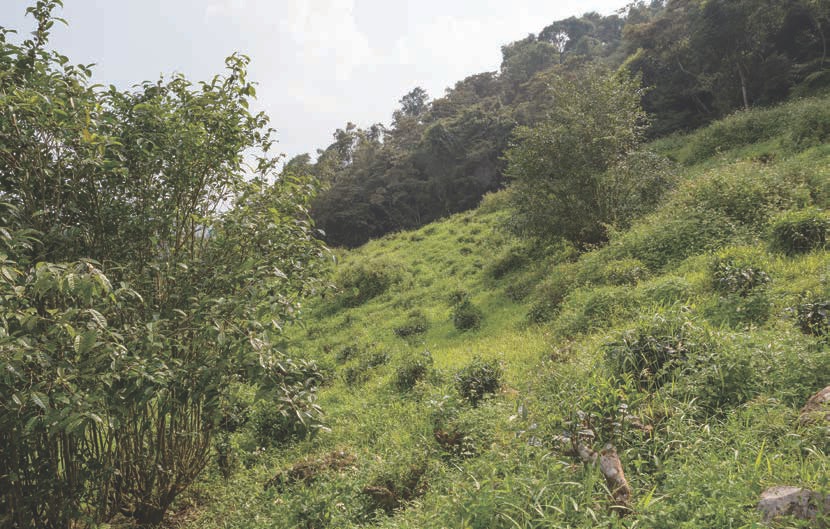
Since the teas fuse more and more the longer they are together, a Five Element tea should be blended right before the sessions and then drunk right away. This is because you want the elements to fuse a little, but mostly maintain their individual characteristics. Otherwise, it won't be a Five Element tea, it will be one element! In other words, if you were to age this month's Five Element tea, it would slowly move away from being a Five Element tea, and more and more, as time passed, become a single tea of its own. Most aged loose-leaf puerh teas are blends. They were blended during production, and people also add tea to them as they are passed down the line - sometimes for a good reason, like improving the tea, and at other times for business, in order to increase the amount. But the good ones don't taste like many teas together; they taste like a single tea. This is because they have fused over time. The ones that are imbalanced haven't yet fused. This may be fixed by aging them for longer, but may also take many decades if the teas in the blend aren't very absorbent and/ or have conflicting energy frequencies.
Consequently, the reason we have never sent a Five Element tea in Global Tea Hut before is that we didn't know how to blend one that could survive the journey. How do you blend a tea that can go a few weeks before it is consumed and still have the five teas be divergent enough to maintain each element distinctly? Wu De says that he thinks he needed a few more years of relatively constant practice to be able to do what he has done this month. We are going to describe each tea in a moment, but the general principle that guided his blending was that he needed the teas to be clear representatives of each of the five elements. He needed the kind of actors that can only play one kind of role, as opposed to the more fluid ones who can do anything depending on the other four elements in a configuration. If you put malleable teas together, they quickly become one tea. This is like a group of very acquiescent, easygoing, easily-influenced people hanging out together: they will very quickly become a single group that works well together. That may be what you want in a certain blend. But not this blend. We needed a group of very strongly stubborn, individualistic people who don't work well in groups and maintain their distinct personalities for longer. This required a lot of work and many tests - many trials and many errors. A lot of Wu De's time and love have gone into this month's tea!
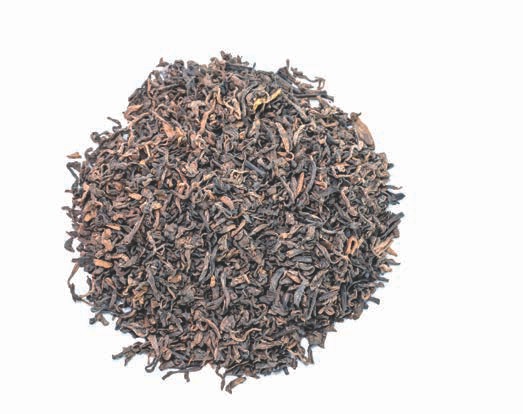
Our water, and base tea, which will hold and take in the energy of the other four teas, is a spring 2014 shou puerh we call "Wet with Rain" (in honor of Van the Man). It is a special grade of shou (Te Ji), which is slightly larger that the all-bud grade often called "Gong Ting." The tea was harvested in the Menghai area. It is smooth and thick, with a medium level of piling. These days, most shou puerh is fully fermented over forty-five to sixty days, which means it cannot age and loses much of its essence. Wet with Rain, on the other hand, has some characteristics of sheng puerh, since the artificial fermentation is only partial. Energetically, this tea is smooth and yielding, and very Yin. It will make a fine base for this month's tea, especially since its flavor, aroma and Qi are so consistent from steeping to steeping. This tea is strong enough to be the water in a Five Element tea that is meant to last a bit. This will represent the largest percentage of tea in our Zen Blend.
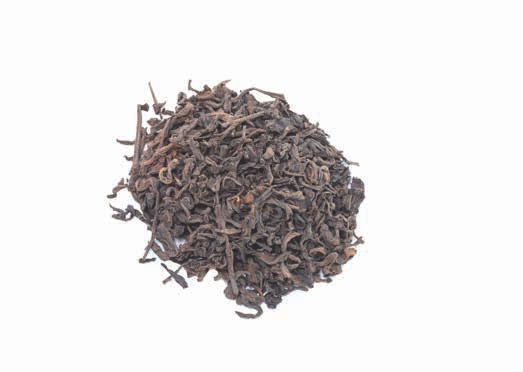
Though any tea can be the wood, we needed one that was decisively wood. There could be no better choice than "Chopping Wood." We actually shared this tea in Global Tea Hut a long time ago (January, 2013). It is a late 1990s 7572 shou puerh. The third number, "7," ensures that this tea is made from large leaves. These mature leaves, sometimes called "huang pian," ferment quickly. They are very woody, reminiscent of the leaf piles you jumped in as a child.

The fire for this blend had to be the fieriest tea we know, "Ember." Many of you have tried this amazing tea. It is a sheng/shou blend from the 1980s. When you drink Ember, you are immediately filled with a warmth that feels like your chest and stomach are a stoked furnace. Guests take their sweaters off when we prepare this tea, though in the winter it is very comforting. We had to be careful about putting too much of this tea into the blend.
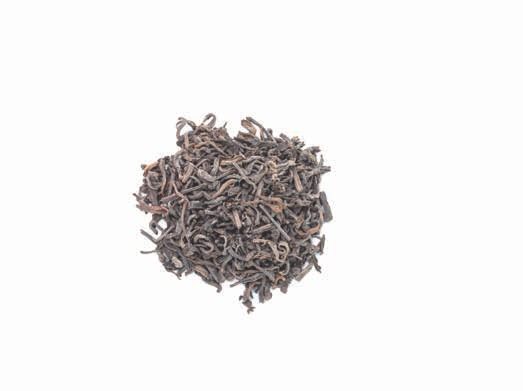
Our grounding force, and the earth of this blend, is a lovely tea that many of you will by now be familiar with - the workhorse early-1990s shou puerh we all know and love, "Gregg's Galactivation Serum," named after our very own Greg Wendt. This solid tea can be spacy when it is drunk alone (hence the name), and so you may think of it as a metal. However, we have found that it is very grounding when blended with other teas; it is extremely earthy, in fact. This is as mysterious as its namesake!

The spirit (metal) of this blend is an early-1980s shou puerh that we call "Bindbole," named after the oldest forest in the Shire. Back in the day, shou puerh was often only artificially fermented to around forty or fifty percent. This meant that the tea was rougher, with some astringency when it was new, and more potential for aging as time went on. Many such teas behave a lot like a sheng, though not as strong. This tea is no exception. Bindbole ignites the Qi, helping to lift the whole blend up. It works especially well with these teas - Ember in particular.

This tea wants to be in communion; it wants to warm you. The liquor is dark and smooth, and the reflection of the Tea Sage Hut reminds you that you're in a place of tranquility. The tea travels down your body, warming you and flushing out toxins. The Zen Blend draws you inwards to a place of harmony, and you sit...
This tea was truly a pleasure to drink. It was thick and delicious. I felt it activate my mind and soothe my body. I also noticed an increased sensory focus spreading to the room, and to the others around me.
I reflected on the idea of blending five elements together harmoniously. I knew in one particular bowl, that a carefully thought out method was a part of this blend because nowhere in my spirit, body or mind did I feel unbalanced. It warmed me from the center of my chest and focused my attention. Surely this tea is a good measure of Zen.
From the moment we sat down, I became very centered. During the session, I became very aware and connected to old friends who I have missed dearly. It felt like the tea was trying to provide a stillness for us to be in each other's company. The intensity fluctuated, as my monkey mind loves to interrupt. Beautiful tea; beautiful experience.
I immediately felt a meditative experience, a presence in the moment. Because I like dark teas, I enjoyed the thick, beautiful brown liquor of this tea, which grew brighter near the edge. A sweetness and camphor aftertaste came on after some time. A pleasant aroma arose from this tea and the Qi concentrated in the central channel, rising to the top of my head. The tea flowed down the throat like oil. I felt emptiness. Words and thoughts dissolved of themselves. Everything began to feel like fireworks and explosions of joy.

As you can guess, the most important tip we have for brewing this month's tea is to drink it as quickly as you can. Ordinarily, we suggest letting Global Tea Hut teas sit for a week or two. A tea's energy is disrupted by flying around the world, just as yours would be. And just like a person, it needs some time to get over jet lag. But since we want to drink this tea when each of the five teas is still as distinct as possible, it may be better to let this one sit for just a day or two and then have your session.
This month's tea can be drunk either gongfu or in a bowl. We recommend carving out at least an hour or two to fully enjoy this tea. Five Element teas are strong and deep, and can help you to release physical and emotional trauma. This session may be the deepest and most lasting peace you've experienced in some time, and that isn't something you should rush.
On a practical level, make sure that the water you use for this month's tea is very hot. You need strong, martial heat to draw the five elements up and fuse them all together. If you can, use charcoal. Even otherwise, make sure the water is very close to boiling, with constant steam. You want to pour into the pot quickly, with a thick and fast stream, so that the pot is filled as quickly as possible, and then immediately covered. Shower both before and after if you are brewing this tea gongfu.
Aged teas like this are forgiving, which means that if you put in too little or too much, steep them too short or too long, etc., they still turn out nice. Still, we would recommend putting a lot more than usual into your pot. Ideally, you should use the whole can for one session. This should be easy if you are brewing bowl tea. If you decide to brew this month's tea gongfu, you may need a larger pot to use it all. Five Element tea should be strong and black, with a kick!
